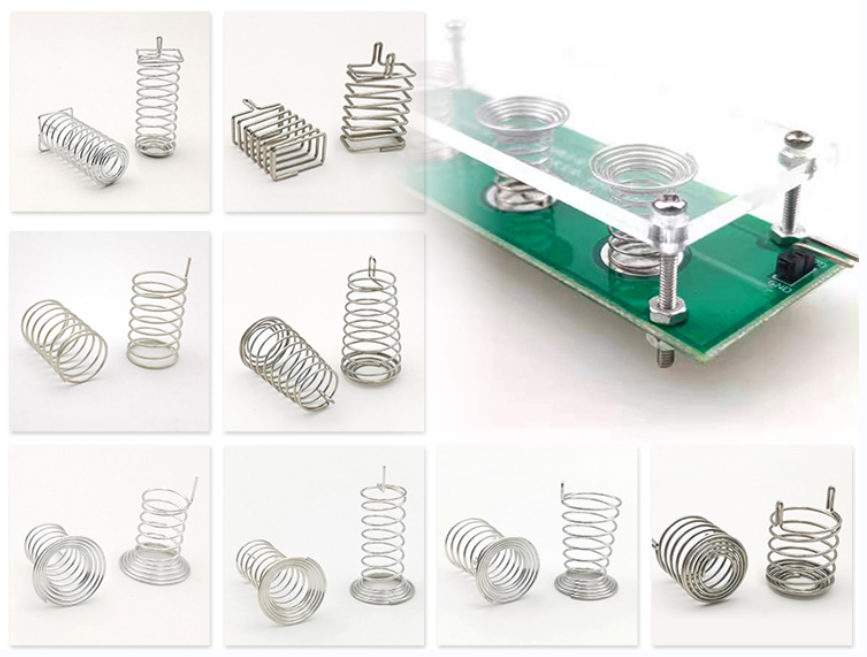In today’s rapidly evolving technological landscape, touch interfaces have become integral to our daily lives. From smartphones and tablets to smart home devices and interactive kiosks, touchscreens have revolutionized how we interact with technology. Among the various components that make touchscreens possible, touch springs play a crucial role, often working behind the scenes to provide seamless, responsive, and tactile interactions.

What are Touch Springs?
Touch springs, also known as “force-sensitive springs” or “tactile springs,” are innovative components that offer a dynamic and intuitive sensory interface. Unlike traditional mechanical buttons, touch springs respond to different pressure levels, enabling a versatile range of touch-based interactions. Pressing a touch spring provides a tactile response, offering users a sense of confirmation and engagement.
How does Touch Springs Work?
The making of Touch Springs uses various technologies, but the underlying principle is relatively similar. Touch Spring typically consist of multiple layers, including elastic materials such as silicone or rubber, with embedded conductive elements like carbon or metal. When something applies pressure to the surface, these layers ensure that the conductive elements make contact, registering the touch input.
The pressure applied determines the deformation in the elastic layer, which affects the electrical resistance between the conductive elements. The touch controller will then detect this change in resistance, which interprets the touch and sends the corresponding signal to the device’s software, initiating the desired action or response.
Where are Touch Springs Used?
1. Smartphones and Tablets: Touch springs are commonly used in smartphones and tablets to provide haptic feedback and differentiate between light taps and long presses. A good Touch Spring enhances the user experience by offering a physical response, improving typing accuracy, and enabling features such as pressure-sensitive drawing or zooming.
2. Gaming Devices: Many gaming controllers and consoles utilize touch springs to create immersive gaming experiences. Touch Springs are also find in keyboards. When applying pressure, a good Touch Spring will generate quick response, enhancing interactivity and response when gaming.
3. Automotive Interfaces: Modern cars, intergrates touch springs into infotainment systems and control panels. These interfaces benefit from the tactile feedback, making it easier for drivers to control the systems without being overly distracted.
4. Industrial Applications: Touch springs find applications in industrial settings, where workers might use gloved hands or need to interact with machines using varying pressure levels. The technology allows for reliable touch input in challenging environments.
5. Medical Devices: Touch springs enable precise and controlled user interactions, therefore are also seen in medical devices. Examples such as specific surgical equipment or diagnostic tools.
Advantages of Touch Springs:
– Tactile Feedback: Touch springs provide tactile feedback, therefore enhancing the user experience by confirming touch inputs and reducing errors.
– Pressure Sensitivity: The ability to detect different pressure levels allows for more nuanced and context-aware interactions.
– Durability: The design of a Touch springs allows each spring to withstand extensive use. Therefore, Touch springs are less susceptible to mechanical wear and tear than traditional buttons.
– Design Flexibility: Touch springs can be integrated into various form factors, allowing designers to create sleek and modern devices.
Conclusion:
In brief, Touch springs represent an essential milestone in the evolution of touch interfaces, providing a tactile, intuitive, and responsive way for users to interact with devices. From consumer electronics to industrial applications, touch springs have proven their worth by enabling a new level of versatility and engagement. As technology evolves, touch springs are bound to play a more significant role in shaping our interactions with the digital world.


Very useful piece of blog